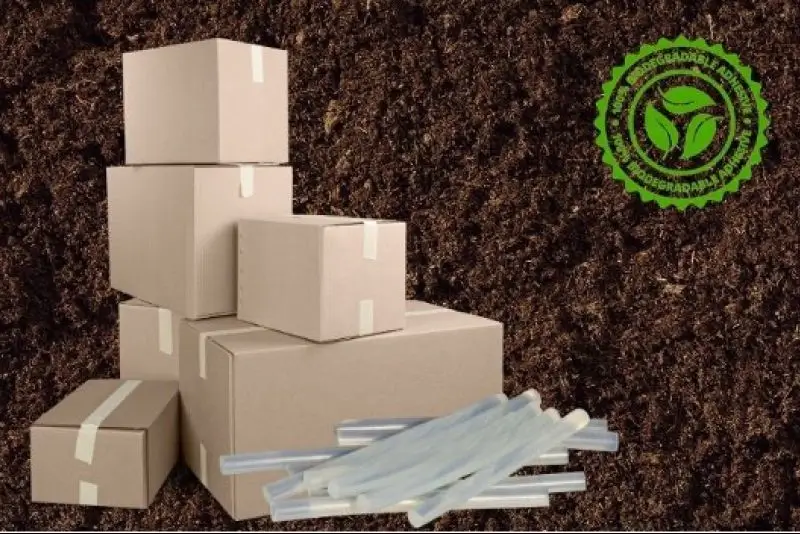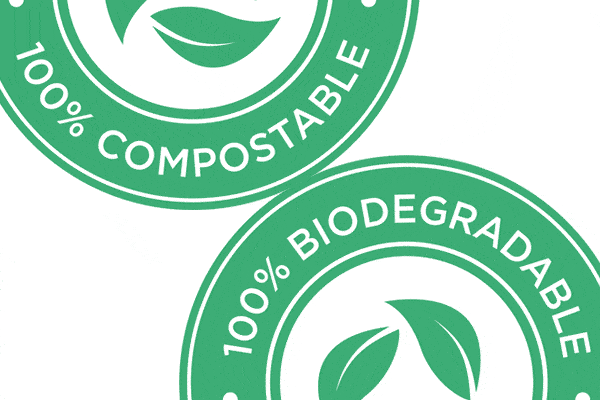Biodegradable heat seal adhesives

Rules and regulations regarding packaging are becoming stricter by the year. Costumers demand a wider choice in products with eco-friendly packaging. The industry must comply or perish. Unfortunately, complying is complicated by the fact that the adhesives used in heat seal packaging have always held back the biodegradability of the entire packaging waste disposal.
How to find the best heat sealant for plastic that is also bio-degradable? How to continue using heat seal food packaging while, at the same time, introduce or expand the use of environmentally compostable materials? AdhesivePlatform can help you find your way in the maze that is heat seal packaging adhesives.
Heat seal adhesives, both blessing and curse
The use of heat seals is well established in the packaging industry. And for a good reason. They help keeping liquids and foods protected against microbes and other contaminants, for as long as the product can be stored.
Heat seal equipment is relatively uncomplicated and can be used with and without a sealing adhesive. Some methods only use heat and/or pressure, to seal or weld two or more layers of matching thermoplastics together. Others use a substrate that has been coated with a thermoplastic heat seal adhesive, possibly applied months before the actual filling and sealing takes place. This can then be shipped and stored until needed, ready for use at the filling line in moment’s notice. This simplifies the logistics involved.
The drawback of traditional plastics and adhesives
Unfortunately, over the last decades we have become aware that the versatility and relative strength of plastics – so favored by the packaging industry – also has a very nasty drawback. We find micro plastics and plastic pollution in soil and marine environments all over the planet, forming a threat to the health of safety of every living thing. This is precisely because of the fact that many types of plastics are relatively indestructible. The call for biodegradable materials has never been louder, and any progressive industrial would do wise to take notice.
Biodegradable heat seal adhesive
The image of the entire packaging industry has improved due to an increasing usage of biodegradable packing materials. Though definitely an improvement, it’s only one step in the right direction. The growing use of eco-friendly adhesives is another.
It is wonderful that the heat seal bonding market is currently experiencing a shift towards biodegradable heat seal adhesives too. Overlooked for a long time, adhesives make up a significant part of packaging waste, often being part of the reason that recycling processes are not as successful as they could be. With only part of the package being biodegradable, the entire package still can’t be treated as 100% biodegradable waste.
Biodegradable heat seal adhesives are versatile
These eco-friendly adhesives are suitable for all paper, biofilm and fiber-based materials commonly used in the packaging industry. The application is the same as their non-biodegradable brethren: either hot melts or liquids are applied to the substrate and let dry. Much like a pressure sensitive adhesive, the heat seal glue forms the final bond when exposed to heat and pressure at the filling and sealing line, hence the name “heat seal”.
Benefits of biodegradable seals in packaging and paper
It goes without saying that the greatest benefit of biodegradable heat-sealing adhesive systems is their environmentally-friendliness and plastic-free formulation. Nevertheless, the heat seal glue brings along also other benefits including:
- No micro plastic pollution: biodegradable heat seal adhesives break down into CO2 and valuable nutrients.
- Cyclic process: the nutrients can be used to enrich soil and promote farming activities, reducing landfill sites in the process.
- Compliance with national and international regulations: many countries have regulations in place to encourage the use of biodegradable heat seal glue. The UK Plastic Pact, to name one, states that all food packaging must be 100% reusable, recyclable or compostable by the year 2025.
- Meeting consumer and brand owner demands: consumers and brand owners are increasingly conscious about the environment, aiming at eliminating plastic pollution from their respective grocery lists and production lines, and willing to replace them with sustainable, eco-friendly packaging.
Eco-friendly heat seal adhesives are not a gimmick
Biodegradable adhesives are very much accepted in the packaging industry, and recognized for their valuable properties. Their compostability is measured against a number or standards. One such standard is the European Norm EN 13432, which evaluates the adhesive or seal on four factors: biodegradation, disintegration, ecotoxicity and heavy metals. Passing these four tests means the heat seal adhesive is biodegradable according to the standard as presented in the following table.
| Test | Biodegradable if... |
| Biodegradation | 90% of the total mass of the adhesive is converted to CO2 within 180 days |
| Disintegration | The germination rate and plant biomass in the compost are more than 90% of those in the corresponding blank compost |
| Ecotoxicity | The products of adhesive composting process can be used to enrich soil or are not harmful to plant growth in the area |
| Heavy metals | The heavy metals in the heat seal adhesive do not exceed the strict limits set in the standard |
Find a supplier of biodegradable adhesives
Biodegradable heat seal adhesives allow for compostable and plastic-free food safe packaging, reducing the global microplastics pollution. Contact us if you want to know more about biodegradable adhesives and specialized suppliers.
Discover more solutions for packaging & paper
What solution are you looking for?
We are specialized in the packaging and paper. Need the best products or advice? Then please leave your details and we will get in touch.





